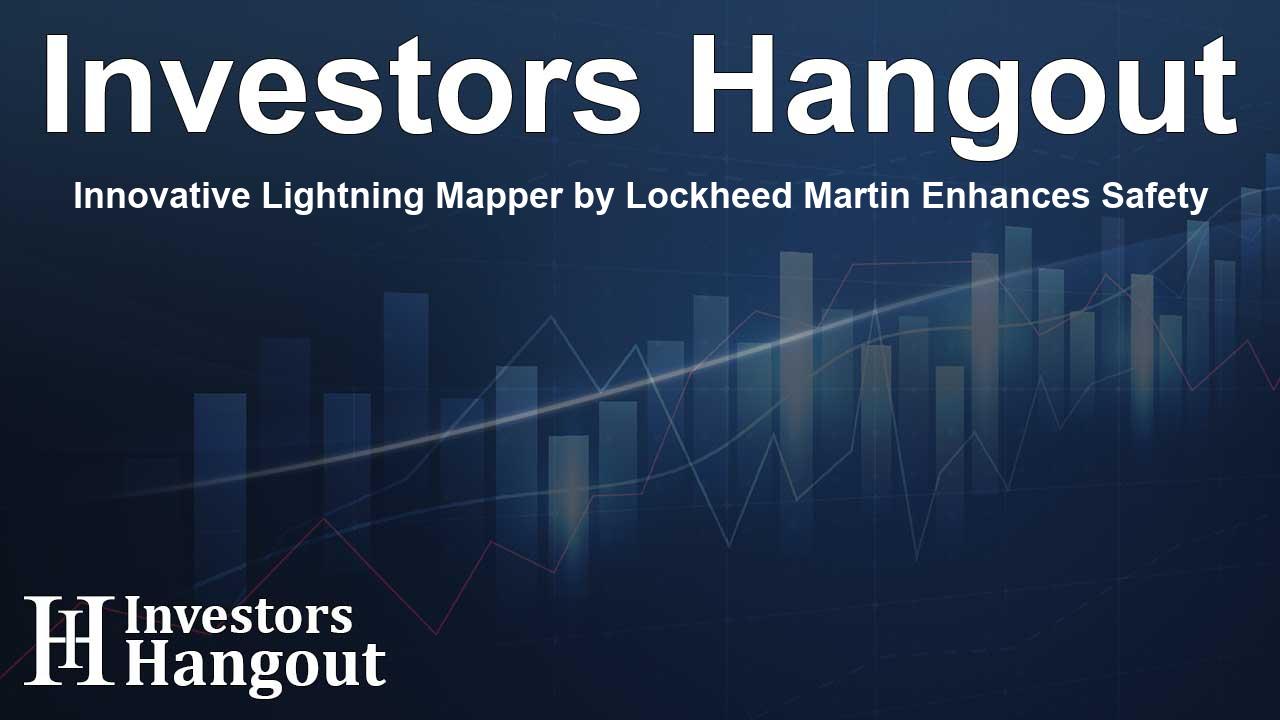Innovative Lightning Mapper by Lockheed Martin Enhances Safety

Advanced Lightning Mapping with Lockheed Martin's New Technology
Lockheed Martin is leading the charge in the advancement of weather monitoring technology with its groundbreaking GeoXO Lightning Mapper (LMX). This next-generation instrument is set to significantly enhance the capabilities of the National Oceanic and Atmospheric Administration (NOAA) within their new weather satellite system.
What is the GeoXO Lightning Mapper?
The LMX is an innovative single-channel, near-infrared optical instrument designed to promptly detect, locate, and measure the intensity, duration, and extent of lightning flashes. Through its deployment on NOAA's future weather satellites, the LMX instrument is expected to provide essential data for enhancing severe weather forecasting.
Importance of Lightning Data
By delivering real-time lightning data, the LMX contributes to persistent monitoring of severe weather phenomena across the Western Hemisphere. This feature is crucial for improving storm analysis and predicting events like tornadoes. Furthermore, it aids in the assessment of hurricane intensity, the identification of lightning hazards, wildfires, and even aviation threats.
Improving on Established Technology
The LMX builds upon the legacy of Lockheed Martin's previously successful Geostationary Lightning Mapper. It promises not only enhanced spatial resolution but also faster imaging capabilities, expanding its view to include more geographic regions, such as Alaska.
Expert Insights
Matthew Mahlman, a director at Lockheed Martin, claims that the improvements made to LMX allow for the detection of up to 25% more lightning pulses compared to its predecessor. This advanced technology equips meteorologists with an essential tool that helps them alert communities to severe storms more effectively, particularly when hurricanes rapidly intensify.
The GeoXO Satellite System
Lockheed Martin's innovations are in line with NOAA's plans for a next-generation satellite system. Following the Geostationary Operational Environmental Satellites (GOES) series, which includes the recently launched GOES-U, the GeoXO program is set to redefine weather monitoring capabilities into the next decade.
Contract Developments
NASA has awarded Lockheed Martin with a significant contract that not only covers the development of the LMX instruments but also includes building the GeoXO spacecraft with a total estimated value of $2.27 billion. This ambitious project showcases Lockheed Martin's decades-long legacy of crafting innovative weather and environmental spacecraft.
Commitment to Excellence
With over 50 years of experience in weather monitoring technology, Lockheed Martin has developed an impressive portfolio of 120 satellites and numerous Earth observation instruments. Their commitment to advancing technology ensures that organizations benefit from unparalleled monitoring and data accuracy.
Conclusion: A Safer Future
As Lockheed Martin continues to push the boundaries of technological capabilities in weather forecasting, the GeoXO Lightning Mapper stands out as a game-changing innovation. By equipping meteorologists with precise and timely data, it will undoubtedly improve response times in severe weather scenarios, thereby safeguarding communities across the globe.
Frequently Asked Questions
What is the purpose of the GeoXO Lightning Mapper?
The GeoXO Lightning Mapper is designed to detect and measure lightning activity in near real-time, enhancing severe weather prediction and analysis.
How does the LMX improve upon previous technology?
The LMX offers finer spatial resolution, faster lightning imaging, and a wider field of view compared to earlier lightning mappers.
Who is the contractor behind the GeoXO Lightning Mapper?
Lockheed Martin is responsible for the design and construction of the GeoXO Lightning Mapper as part of their contract with NASA.
When did Lockheed Martin receive the award for this contract?
The contract for the GeoXO Lightning Mapper was awarded recently, marking a significant milestone for weather monitoring technology.
What are the benefits of improved lightning detection?
Enhanced lightning detection can improve storm tracking, hurricane intensity assessments, and ultimately lead to better safety measures during severe weather events.
About Investors Hangout
Investors Hangout is a leading online stock forum for financial discussion and learning, offering a wide range of free tools and resources. It draws in traders of all levels, who exchange market knowledge, investigate trading tactics, and keep an eye on industry developments in real time. Featuring financial articles, stock message boards, quotes, charts, company profiles, and live news updates. Through cooperative learning and a wealth of informational resources, it helps users from novices creating their first portfolios to experts honing their techniques. Join Investors Hangout today: https://investorshangout.com/
Disclaimer: The content of this article is solely for general informational purposes only; it does not represent legal, financial, or investment advice. Investors Hangout does not offer financial advice; the author is not a licensed financial advisor. Consult a qualified advisor before making any financial or investment decisions based on this article. The author's interpretation of publicly available data shapes the opinions presented here; as a result, they should not be taken as advice to purchase, sell, or hold any securities mentioned or any other investments. The author does not guarantee the accuracy, completeness, or timeliness of any material, providing it "as is." Information and market conditions may change; past performance is not indicative of future outcomes. If any of the material offered here is inaccurate, please contact us for corrections.